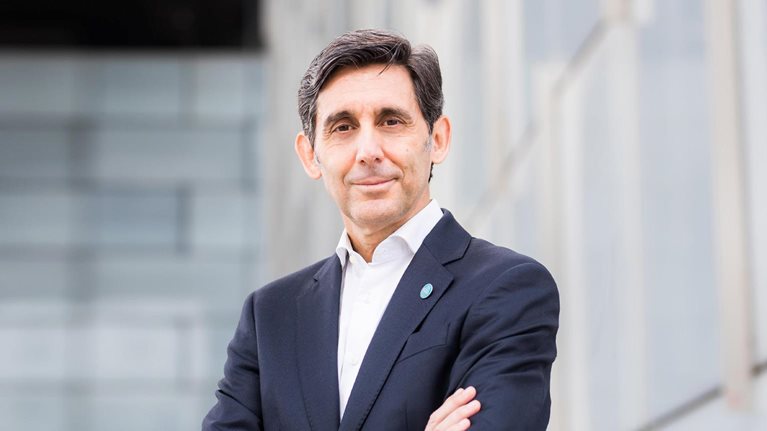On the face of it, the outlook for European telco operators is not bright. US and European operators have both struggled in the past decade, with total returns to shareholders—a measure of both past performance and expectations for future growth—falling even as the MSCI World Index has shown strong growth.1 European companies have fared particularly poorly, losing both more ground to over-the-top (OTT) companies and hyperscalers than their US counterparts and more market value. By the end of 2021, their median return on capital had fallen to 6.3 percent, which is not only lower than that of the top US telcos but barely higher than their cost of capital (Exhibit 1). With investments still being made in fifth generation (5G), fiber, and other technologies to upgrade networks, their returns risk falling even lower.

The current economic climate threatens to make matters worse. Following on the COVID19 pandemic, the war in Ukraine and ensuing international sanctions have sparked unusually high inflation in markets around the world and pushed economies into low or even negative growth. Telco revenues can be resilient in a downturn—telco services are seen as essential and, for households at least, constitute a relatively small proportion of expenditure. This time around, however, with inflation so high, they may come under greater pressure as customers reconsider their budgets at the same time as operators’ margins are squeezed. Costs for wages, energy, network equipment, and borrowing are all on the rise.
The extent to which operators will be able to offset such costs by raising prices remains to be seen. Operators in some countries—the United Kingdom, France, and the Netherlands, for instance—have already raised them. But much will depend on the market structure in different countries, regulations, and, importantly, customer behavior. European telco customers are unaccustomed to price hikes. In the past decade, average mobile revenue per user in Europe has decreased by 20 percent, even as usage has increased.2 And a survey by New Street Research in March 2022, before inflation began to soar, showed price had already replaced quality as the number-one consideration among consumers when choosing a mobile or fixed provider.
These conditions are undeniably tough. The consolation, though, is that they may help companies focus their efforts on arguably the only effective response: capturing growth from new businesses. For while untapped value still lies at the core of an integrated telco’s operations, it is unlikely to prove sufficient to transform performance. To maximize their chances of generating new revenue streams, executives may therefore want to consider an organizational overhaul that separates certain activities into focused, independent units whose sole focus is growth—what is known in the industry as delayering.
Would you like to learn more about our Technology, Media & Telecommunications Practice?
Going for growth
Growth rather than margin improvement is the most powerful way for telco operators to ensure tangible value creation. For a typical European telco, it can be twice as powerful—encouraging news in an environment where margins can be hard to improve (Exhibit 2). But companies will have to move fast and with determination if they are to build investors’ confidence, aiming to capturing substantial new growth in as few as two to three years.

Most operators are already nurturing new businesses. Some are looking beyond connectivity to offer B2C services in adjacent businesses or by setting up ecosystems that support a portfolio of digital services. Norway’s Telenor, for example, has set up a mobile insurance service, while Spain’s MásMóvil has established a consumer finance service through a joint venture (JV) with French bank BNP Paribas. Turkey’s Turkcell orchestrates a platform whose services include digital payments, gaming, news, and other entertainment apps.
Some operators are also establishing B2B digital businesses, be that offering digital solutions for specific industries, or cybersecurity, cloud, and consulting services to large corporations or small and medium-size enterprises (SMEs). Canada’s TELUS uses data analytics and digital solutions to offer a range of services in the agricultural and consumer goods sectors, helping farmers monitor crops or distributors forecast future sales, for instance, while Telefónica’s T-Tech has achieved double-digit growth in the past two years by focusing on cybersecurity, cloud, and Internet of Things (IoT) B2B digital services. A few are breaking still-newer territory by beginning to explore the B2B2C opportunities that might arise from the next wave of technological disruption. Advanced gaming and IoT applications are already being rolled out, but even more powerful ones lie ahead, including applied AI, immersive reality, and Web3. By controlling the APIs that link new applications with the high-performing connectivity and computing platforms upon which the applications depend, operators may have the opportunity to monetize their platforms and retain a greater proportion of the overall value created from their investments than has proved possible to date (see sidebar, “How APIs could help telcos establish new business models”).
The European Union’s determination to secure what it calls digital technological sovereignty could also, to some extent, help operators secure growth. The EU aims to invest 160 billion euros by 2027 to help close the technology gap that exists between Europe and its competitors on a range of metrics3—a move likely to increase demand for new telco services. But a more powerful driver of growth, and one that is entirely in operators’ own hands, lies in the focus that delayering can achieve.

e& Group CEO: Transforming from a telco to a techco
The case for delayering
Private investors have long recognized the distinct pockets of potential value that exist within an integrated telco operator and that can be unlocked when transferred into a more focused business. They have made hundreds of deals around the globe to acquire telcos’ towers, for example, buying up more than 60,000 a year on average in the past five years and often creating value in the process. The EV/EBITDA multiple of one North American tower company operating more than 220,000 sites around the globe recently stood at 25.9,4 almost four times higher than that of a typical large, integrated telco operator with significant tower assets. Importantly, our analysis suggests that more than 60 percent of that difference is not due to financial drivers, such as a lower cost of capital because of the nature of what is regarded as a relatively low-risk business, but by the operational ones that derive from focus and specialization. Tower companies have the potential to earn higher returns because of their freedom to focus squarely on accruing and operating attractive assets, and because investors see the growth potential in the sector.
There is a strong case for why telco operators are more likely to maximize growth, for new businesses and old, if they establish similarly focused, customer-centric units entirely geared toward chasing it.
As such, delayering is far removed from the trend witnessed whereby operators, often keen to raise finance to help fund network rollouts, separate and sell certain assets. Rather, it entails the careful reorganization of activities in a manner that will maximize the chances of growth by clustering together those that have similarities, whether in terms of the customers they serve, the products they produce, their business models, or their capabilities. There might be a B2C and B2B unit, for example, and others for infrastructure and wholesale services.
Organized in this way, delayered units focus management attention and expertise, making it clear where growth opportunities might lie and easier to capture them. In an integrated company, attention and expertise has typically focused on either the core network business, with payback over ten to 15 years, or the promotion of new products and services—a new handset, perhaps—through short-term pricing decisions. As a result, businesses that lie between these two extremes are often less well understood and sometimes less well managed.
Delayered units also allow for different operating models. B2C and B2B units might require an agile operating model that depends upon collaboration and partnerships with third parties, while a network unit will likely require a more structured model built upon in-house capabilities.
Delayering also brings transparency, as it removes hidden cross-subsidies between different parts of the organization, revealing the true performance of each and often the urgency with which existing businesses must be restructured or new ones launched. Thereafter, with a set of differentiated KPIs for each unit, growth can be closely tracked.
Finally, delayering is attractive to the stakeholders upon whom growth might depend. A delayered unit can help attract talent as it can formulate a more targeted talent strategy with distinct attraction, progression, retention, and incentivization schemes. It can articulate a clearer growth story to investors with different investment horizons. And it can open opportunities for M&A, JVs, and partnerships that may not have been possible within an integrated company.
Delayering is a complex exercise that requires executives to communicate a bold vision of the future while adopting a flexible approach to change. They will need to define the scope of each delayered unit, give each unit its own systems, resources, and processes, and instill mechanisms that will allow the different units to continue working together. Delayering is therefore a long journey that requires commitment from the entire management team as well as shareholders, and one that few European players have yet to embark upon. Telefónica has made a start, creating an infrastructure and a B2B digital service unit, while e&, the telecom and technology group headquartered in the United Arab Emirates formerly known as Etisalat, has split the company into several divisions with the express purpose of promoting growth and investments. The results will take time to materialize.
Importantly, delayering alone will not transform the performance of Europe’s telcos. Some companies will likely benefit more than others, depending on the size and complexity of their operations and the competitive dynamics in any market. And all will need to take a range of additional measures to boost performance. That said, delayering could prove to be a cornerstone of any transformation, as it is hard to envisage a more powerful means of helping telcos focus on the growth imperative and foster the mindsets and practices necessary to deliver that growth.


